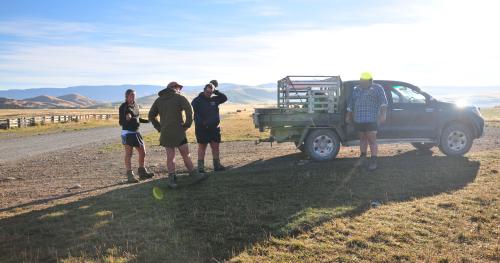Search results
Displaying 711 - 720 results of 1426
- … Find out more about factors that can affect pricing in our … sector forecast future price activity, mitigate risk and identify opportunities. … soft commodity indicators We also monitor the annual and monthly global price trends of …
- News… is urging farmers in regions affected by the recent windstorms to pause, plan and allow vegetation to fully dry out before setting it alight. This helps …

- Resource book… seed force new zealand part programme set out find out what happening hill country … actions farms can identify best ways support them create resilient farms farming systems … outcomes farming however important investigate regenerative agriculture understand more …
- … We partnered with the Federation of Maori Authorities' (FOMA) to launch the Performance Plus Mixed Livestock programme across 20 farms throughout the North Island; with funding support … About the programme The programme was born out …
- … support for farmer focus groups where the outcomes and solutions developed can … provide new information and ‘know how’ for other sheep and beef farmers. … groups or subject-specific activities. Find out more Contact your local extension manager …
- Resource book… style 5 5 what npsib why should care sets out how regional district councils identify … little understood undescribed unknown therefore effect activities biodiversity … need partnership landowners transparency about how information used 14 click edit master …
- News… B+LNZ made its submission on the Government’s RMA reform consultation on … a substantial reform process is well thought-out and will lead to positive change. … expressed across the sector, and beyond, about the process to date, and the resulting …

- … The Government is working on updating the … where they stand. We have been clear throughout this process that not enough time has been … is not a comprehensive list but should help outline some of the important aspects of the …
- … in particular you would like us to know about RMA Reform, please complete the survey above or email us at … On 9 December 2025 the Government released the legislation that … properly understand the potential impact without seeing the secondary legislation (e.g. the …
- Resource book… coopworth corriedale dorper both islands south island both islands both islands both … terminal sire crossing ewe flocks two typesthe white black headed dorper early maturity … both islands both islands both islands south island both islands both islands both …